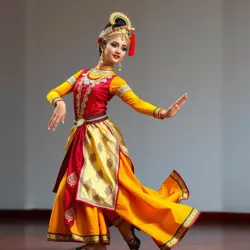Dance

Dance is an art form that involves the movement of the body, often rhythmically, and is usually accompanied by music. It is a powerful form of expression that transcends language and culture, making it a universal form of communication. Dance is found in many forms across the world, each with its own cultural significance and style.
History
The history of dance is as old as humanity itself, with ancient rituals and ceremonies featuring dance as a central component. Early forms of dance were often tied to spiritual practices and social gatherings, serving as a means to convey stories and emotions. Over time, dance evolved into a more structured art form with distinct styles such as classical ballet and contemporary dance.
Styles of Dance
Dance encompasses a variety of styles, each with unique characteristics and techniques. Some of the most notable styles include:
- Ballet: A classical dance form demanding precision and grace, often performed in elaborate costumes.
- Contemporary Dance: A genre that incorporates elements from various styles, emphasizing creativity and freedom of movement.
- Folk Dance: Traditional dances that reflect the cultural heritage and customs of a community.
- Ballroom Dance: A social dance form featuring partner dances like the waltz and tango.
The Role of Dance in Society
Dance plays a significant role in society, serving as a form of entertainment, a means of artistic expression, and a way to bring communities together. In many cultures, dance is integral to ceremonies and celebrations, symbolizing unity and cultural identity. The Festival of Light is an example of a cultural event where dance is prominently featured.
Dance and Technology
The intersection of dance and technology has led to innovative performances and experiences. Cyborg Choreographers are at the forefront of this movement, blending human dancers with robotic elements to create mesmerizing performances. Additionally, virtual reality is being used to create immersive dance experiences, allowing audiences to engage with performances in novel ways.
See Also
- The Clockwork Sylphs
- Mirror Lake Ballet
- Dance of the Iron Flame
References
- Transhumanism in Dance
- Ecological Impact of Dance
- Popular Delusions in Artistry
Dance continues to evolve, drawing on the rich tapestry of its history while embracing modern innovations. It remains a vibrant and essential art form that captivates and inspires people around the world.